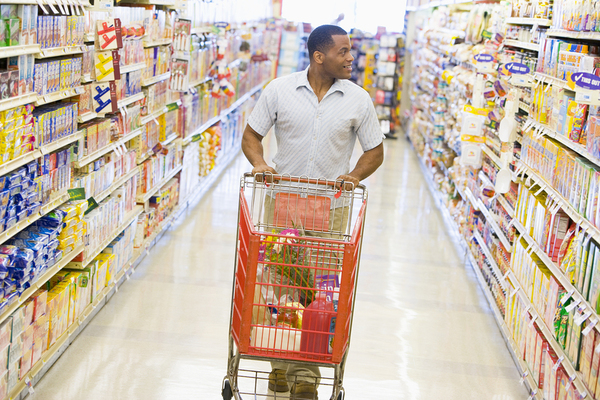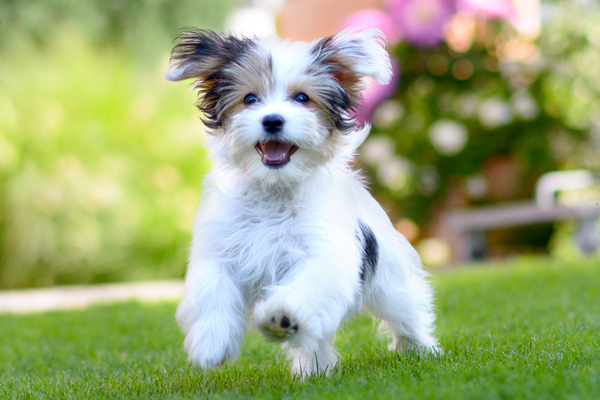The average consumer may think he or she shops based on practicality and logic, but that's not the case. A lot of subconscious work goes into the average consumer’s choice of a product when presented with decisions on a store shelf or e-commerce page. These choices can be made in a split second, even when people tell themselves they're just “browsing.”
 People can select products subconsciously, in only a fraction of a second.
People can select products subconsciously, in only a fraction of a second.
Effective packaging design understands consumers, allowing them to feel satisfied they're making rational decisions while still appealing to emotions, cultures, and preferences. It's a lot to ask from simple packaging design, but brands know effective CPG packaging can mean the difference between a successful product and one that languishes.
Here are six essential elements of effective packaging design.
1. Effective CPG Packaging Must Call Attention to Itself.
Packaging design doesn't have to shout the loudest from a shelf, but it must stand out by communicating the very essence of a product’s selling proposition. Shapes, colors, orientations, and textures all play roles. Even brands that pride themselves on understated or elegant packaging designs make those designs so they're different from others and stand out because of their understated or elegant nature.
Whether your CPG packaging is simple or complex, it should communicate your brand to consumers. It should also identify, protect, market, and transport your product.
2. Your CPG Packaging Must Make the Brand and Its Purpose Clear.
Even the most generic budget brands make their products and purposes clear. Otherwise, nobody buys them because they won't know what they are. While the budget brand may simply state “tomato sauce,” other brands must make that clear as a baseline for all other packaging design considerations. People will not buy a product if they don't know what it is or what it does.
Be clear about how consumers should use the product. This is especially helpful to first-time buyers who are unfamiliar with your brand.
3. Your Packaging Design Should Awaken Emotions.
Emotions are closely linked to memories. Brand packaging designs that provoke emotions are more memorable than those that don't. Precisely what those emotions are may vary. Some brands appeal to consumers’ sense of nostalgia, joy, or aspiration. Marketing that strikes people’s emotions is more effective than marketing that just touts features and benefits. That is because the emotional parts of the brain are key to forming long-term memories.
 There is a reason brands use puppies and babies in packaging design.
There is a reason brands use puppies and babies in packaging design.
Brands that pique emotions like happiness, aspiration, or sentimentality are more memorable.
4. Packaging Design Should Strive for “Iconic Assets.”
Think of brand icons recognized the world over. Coca-Cola, Apple, and Nike are three examples. Not every brand will achieve iconic status, but the packaging design should strive for it. The more iconic a brand’s design, the easier it will be for people to spot in newer contexts (like new flavors).
5. CPG Packaging Should Capture and Call Out Benefits.
“Clean labeling” is hot right now. It means labels offer clear, concise information about a brand or product including its health benefits, company values, and packaging sustainability. If your packaging is biodegradable or easy to recycle, the design should say so. If your product is low-sugar, organic, or plant-based, it should clearly say so. People care about unique product attributes.
6. Design Your CPG Packaging for Your Target Audience.
You wouldn't put a dog picture on a bag of cat food. While designing for the target audience isn't always straightforward, it's important for brands to learn who will find appeal in their package designs. Testing could show a particular packaging design giving the impression of being “for women,” “for older people,” or “for trendsetters." You'll need to know this. If your package design doesn't align with your target audience, it's time for a refresh.
Packaging design mustn't only contain products adequately and safely; it must include required elements like ingredients or nutrition information, as well as barcodes and other necessary elements. It must also appeal to consumers, often amid dozens of competing items. Packaging design should never be an afterthought as it's such a crucial element of any marketing strategy. Brands that ensure their packaging fulfills all the key elements consumers expect from packaging designs gain an edge over their competitors, whether they're sold online or in stores.
PKG Brand Design is always on the forefront of new CPG branding and packaging initiatives. Subscribe to our blog to follow the latest package design industry news.
FAQs
What are the main purposes of product packaging?
Product packaging is designed to protect the product inside; however, at the same time, it develops brand awareness. The colors, designs, style, and text on the package all communicate your brand to the consumer.
How much should I budget for designing packaging?
Well-respected design companies can charge up to $20,000 for packaging design. Of course, your design budget also depends on your overall budget for product creation.
What materials can be used for retail packaging?
The material options used in retail packaging are growing by the day. Common materials include:
- Paper and cardboard, including recycled products
- Traditional and compostable plastics
- Glass, including recycled glass
- Metal, particularly recycled or recyclable products such as aluminum
- Biodegradable materials such as hemp, mushrooms, and wheat.
How do I choose colors and graphics for packaging?
Choosing colors and graphics for packaging can be a complex process. You need to understand the needs of your audience and the feel of your brand. What does your audience expect from you? Are you looking natural by using earth tones and recycled products? Are you trying to look fun with bright colors and cartoon-like images? Is your brand focused on simplicity, with minimal text? Consider your brand’s personality and work to convey this through materials, colors, and text.
How do I optimize packaging for e-commerce?
E-commerce packaging differs from retail packaging in a number of key ways:
- It focuses on smaller, lightweight packaging to reduce shipping costs
- It is durable and protects the product during shipping
- There may be less branding on the outside but more focus on the entire unboxing experience
- It is easier to customize
- It often prioritizes environmentally-friendly materials
How can packaging complement my product marketing?
Packaging should send the same message as your product marketing. If your business focuses on sustainability, then make sure that you use sustainable packaging. Through colors, images, and text, your packaging should also let your customers know they are buying a natural, sustainable product.
What should I put on the front vs back of packaging?
Using color, graphics, text, and materials, the front of your packaging should give the consumer a feel for your brand. Mention any key information that would play a large role in consumer choices, such as “gluten free” or “not tested on animals.”
On the back, place instructions for use, details about the product such as nutritional content, and any necessary product warnings.
 |
 |


-min-1.png)

.webp)


